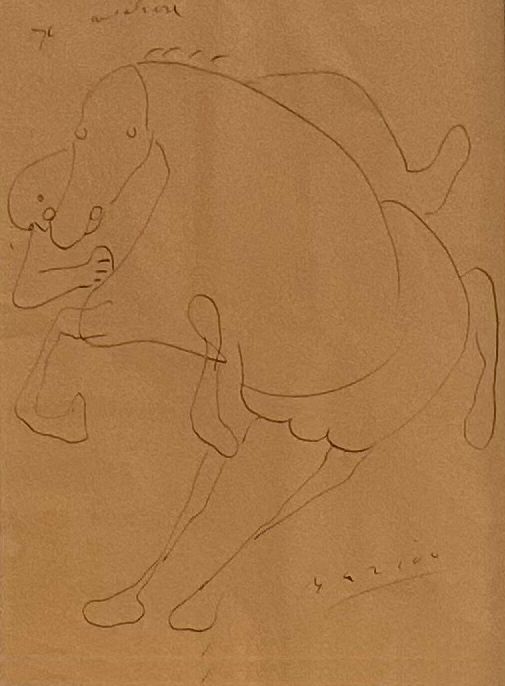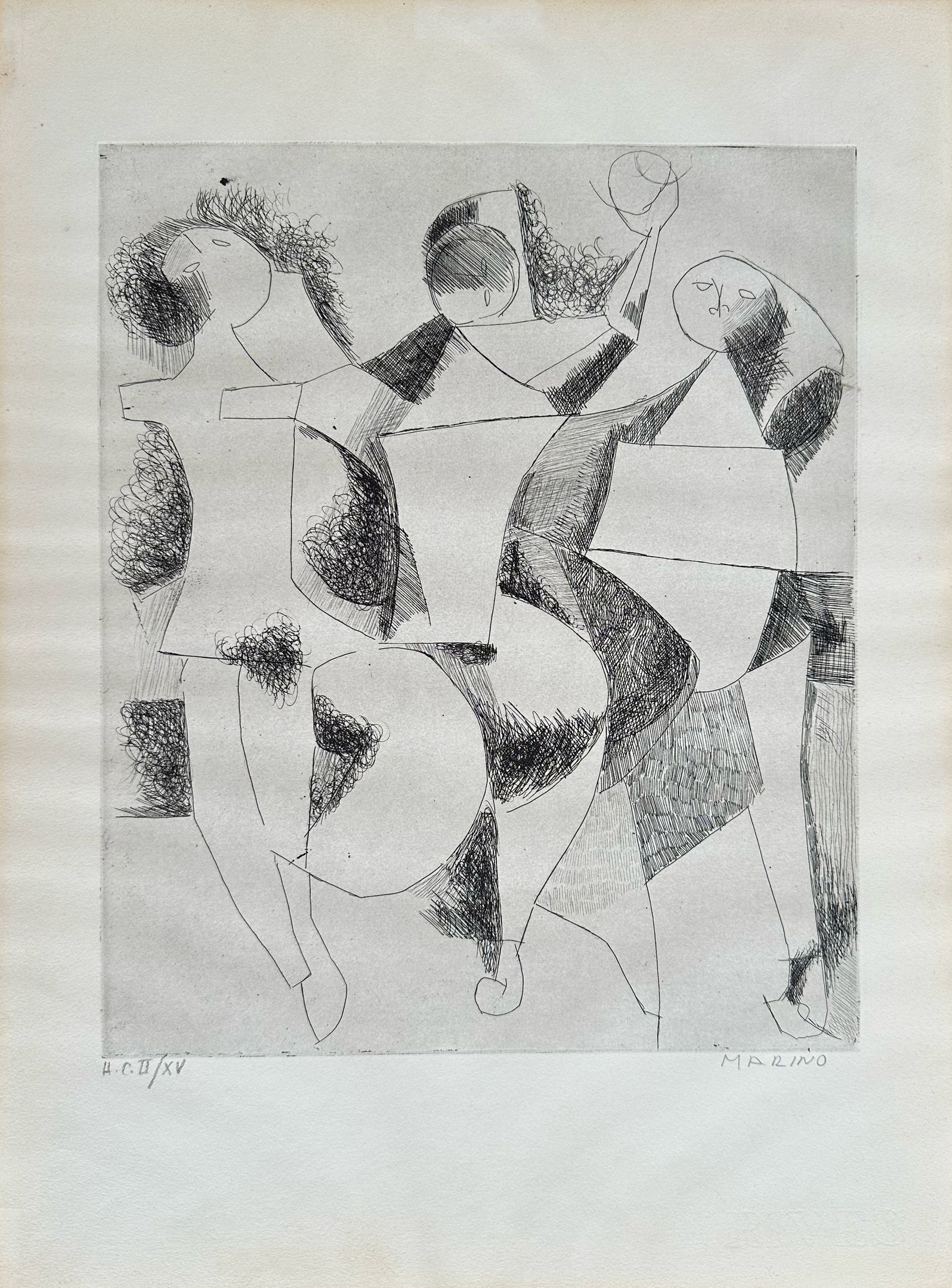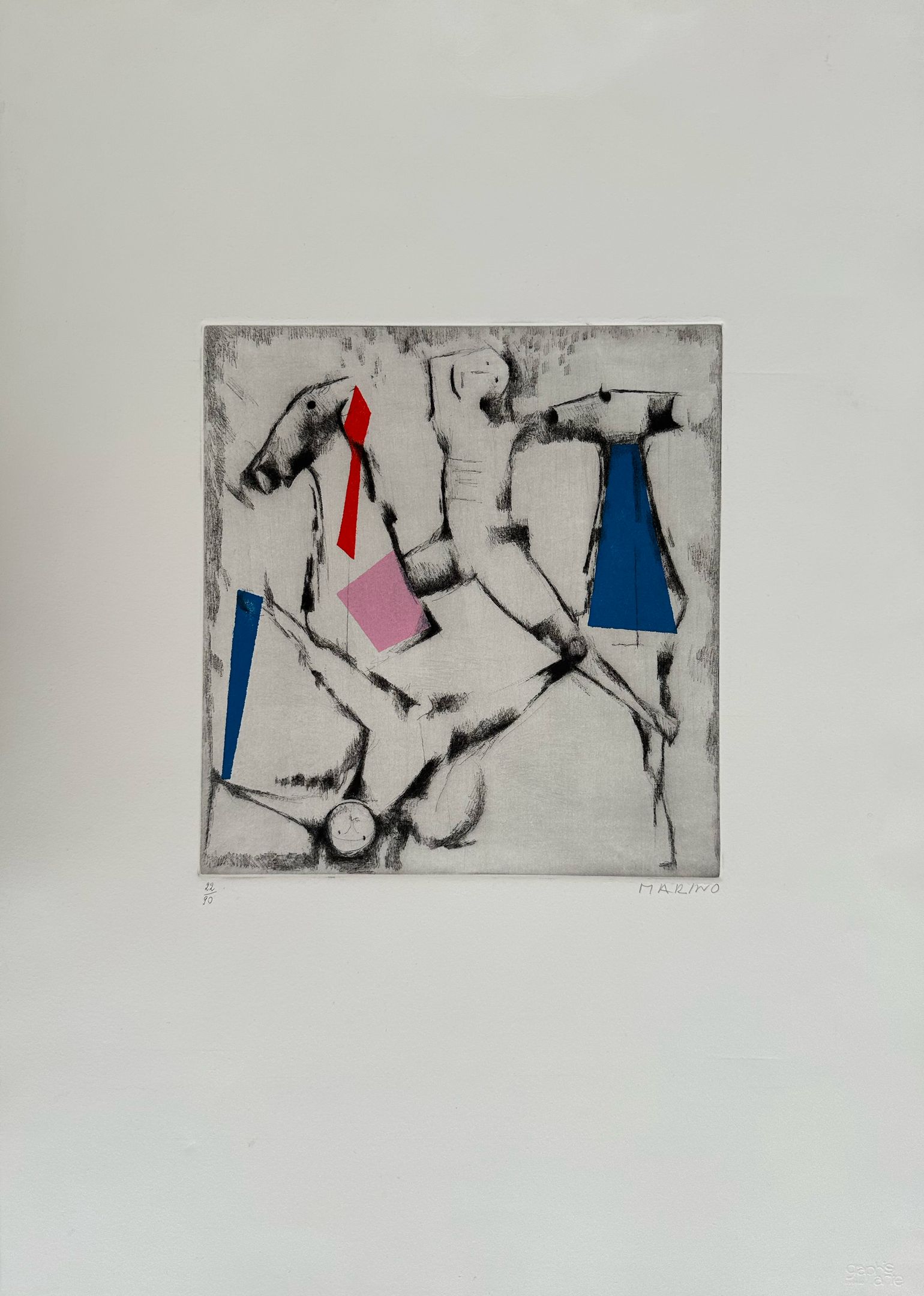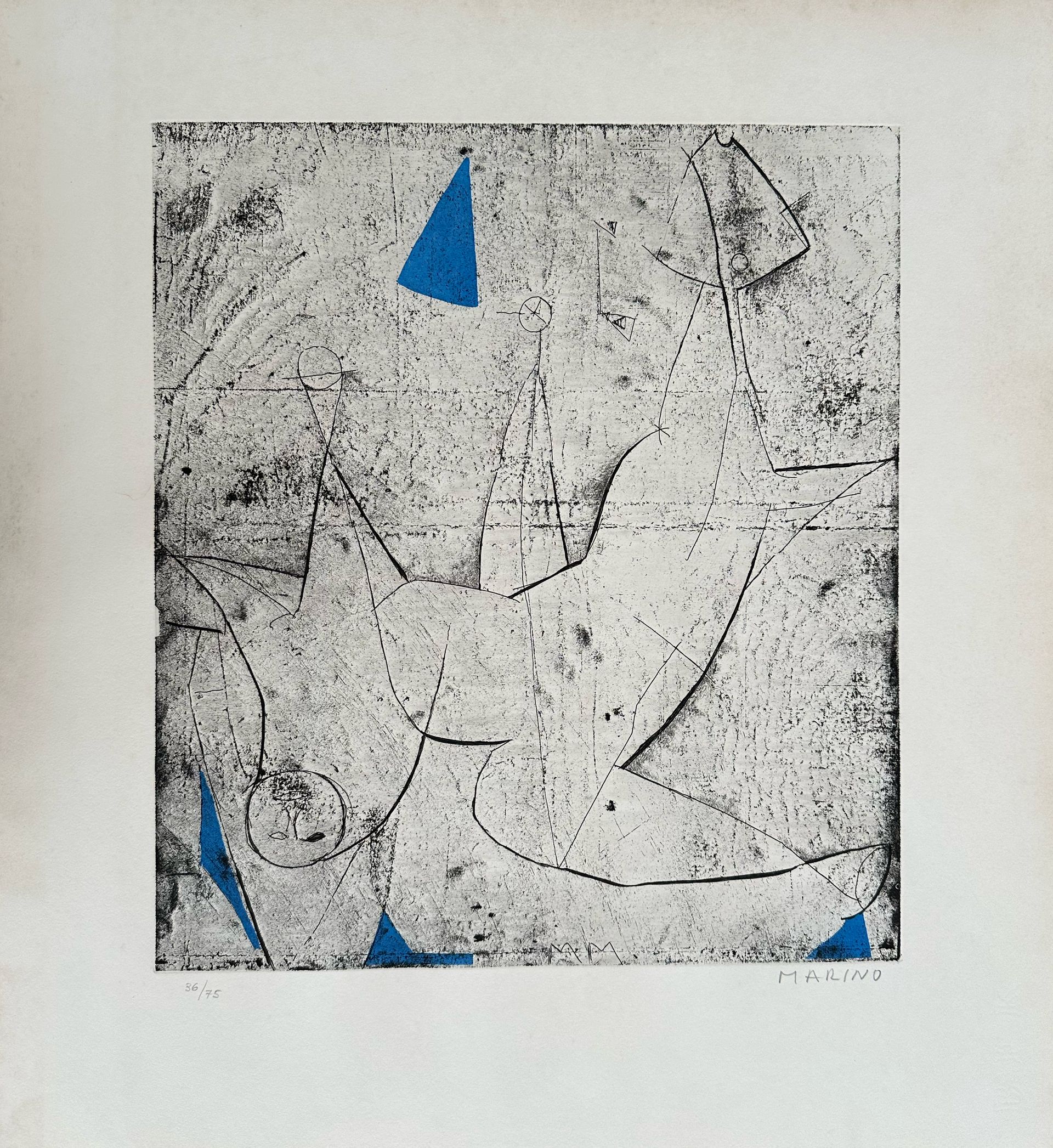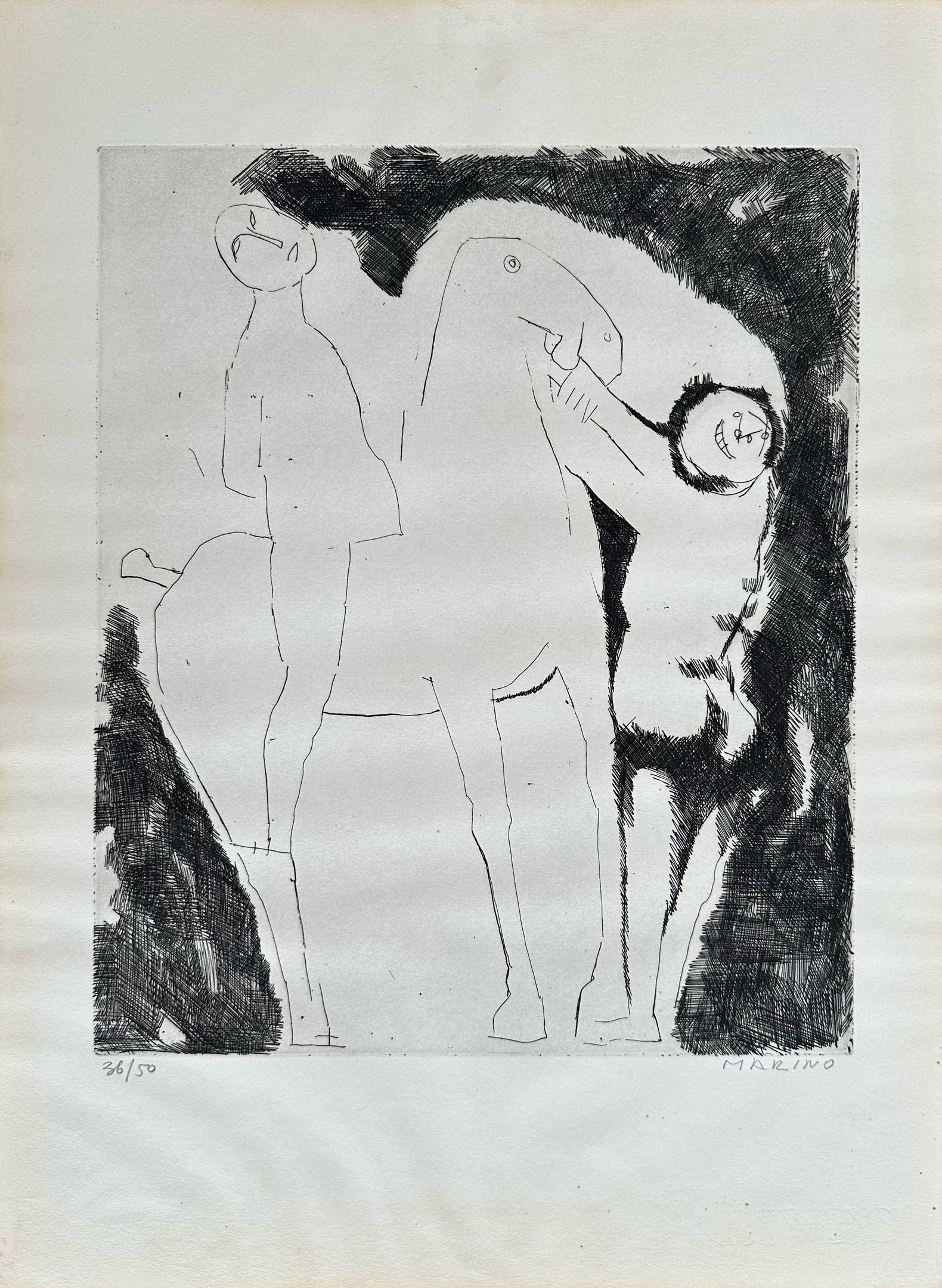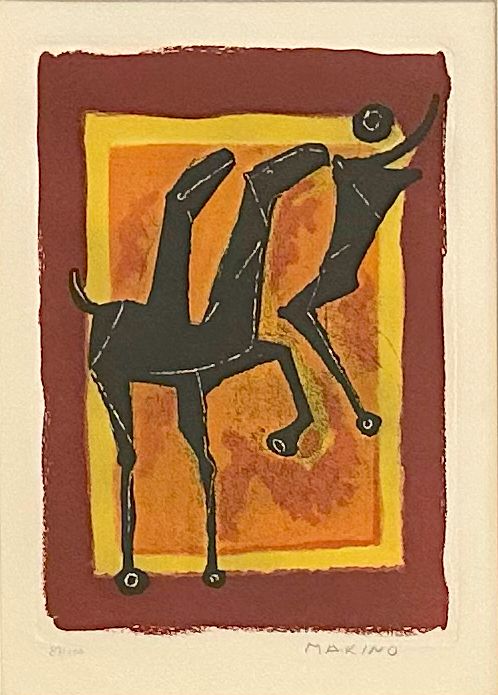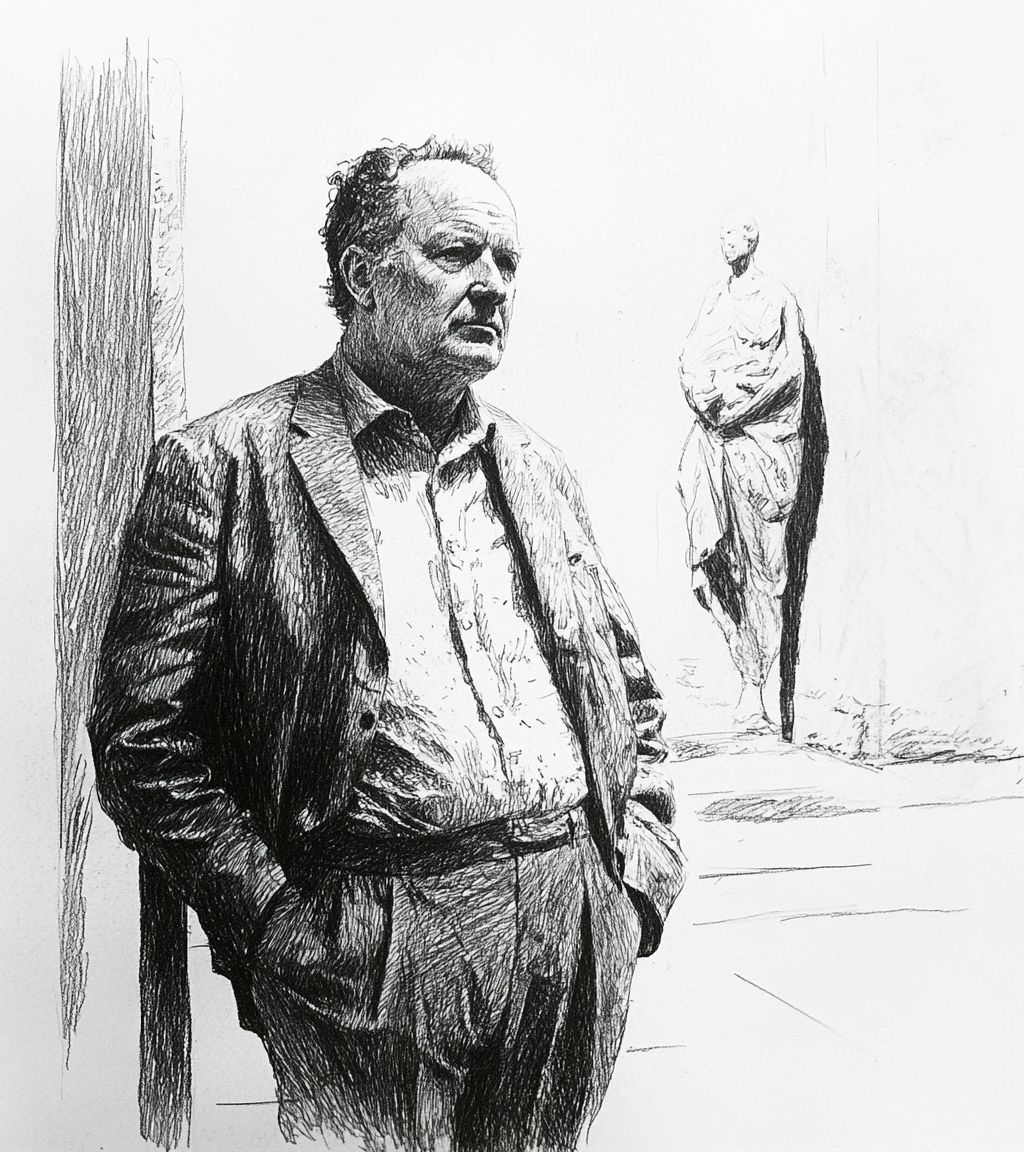
Marino Marini
Marino Marini studied painting and sculpture at the Accademia di Belle Arti in Florence. In the 1920s and 1930s, he traveled extensively in Europe, absorbing influences from Etruscan, Roman, and Gothic art, as well as modernist movements such as expressionism and cubism. By the mid-20th century, Marini had become one of Italy’s most important sculptors. He held teaching positions at art academies in Monza and Milan and remained active in the European avant-garde throughout his life.
Marini is best known for his dynamic equestrian sculptures — stylized representations of horse and rider that evolved from classical harmony into increasingly dramatic and expressive forms. These figures symbolized the changing human condition in a modern world marked by anxiety and upheaval. His work often combined solid, monumental forms with a deep emotional intensity. Marini also created portraits, female nudes, and symbolic figures in bronze and terracotta, using rough textures and simplified shapes to enhance their expressive power.
Some of Marini’s most iconic works include The Angel of the City (1948) — installed at the Peggy Guggenheim Collection in Venice — and Miracle (1953–59), a sculpture series capturing moments of tension and release. His work was exhibited at the Venice Biennale. Marini also had major retrospectives at institutions like the Kunsthaus Zürich, the Tate Gallery in London, and the National Gallery of Modern Art in Rome. Today, the Museo Marino Marini in Florence and the Fondazione Marino Marini in Pistoia preserve his legacy and exhibit his work to international audiences.
Collected by major institutions and notable private collectors:
— The Metropolitan Museum of Art— Museo Marino Marini Firenze
— Peggy Guggenheim Venice
— Tate
Notable sales and auction records:
— Cavaliere, £4,4 million at Christie's, London, 2010— L'Idea del Cavaliere, USD 7 million at Sotheby's, New York, 2007
— L'Idea del Cavaliere, USD 4,1 million at Sotheby's, London, 2011
Artworks and Paintings
Biography and Artistic Career Highlights
Marino Marini was born on February 27, 1901, in Pistoia, Italy, into a family of artisans. His childhood took place in a traditional Tuscan environment, where he showed an early inclination for drawing and modeling. Initially, his parents envisioned him as a future craftsman, but the young Marino firmly decided to dedicate himself to art.
1917 — entered the Florence Academy of Fine Arts, where he studied painting and sculpture, taking a particular interest in ancient art and Renaissance masters.
1922 — held his first exhibitions in Florence, presenting himself as a sculptor.
1929 — appointed professor at the Florence Academy of Fine Arts, where he taught sculpture and graphics.
1930s — developed his distinctive style, focusing on archetypal images, particularly the theme of the horse and rider, which became the central motif of his career. These figures were interpreted not as genre scenes but as philosophical symbols.
1935 — participated in the Venice Biennale, where his works attracted international critical attention.
1936–1938 — traveled to Switzerland and Germany, where he encountered European artistic movements, including Expressionism.
1940s — appointed professor at the Brera Academy in Milan.
1943–1945 — while in exile in Ticino, he created a series of significant works, characterized by heightened drama and expression.
1948 — participated in the Venice Biennale, where he achieved international recognition.
1950s — period of flourishing creativity: his sculptures were exhibited in London, New York, and Paris. Marini became one of the leading Italian masters of modern art.
1952 — awarded a prize at the Venice Biennale.
1954 — retrospective exhibition in Milan. During these years, he worked extensively on his "Riders" series, in which the human figure and the horse embodied the drama of the relationship between humanity and nature.
1960s — undertook new large-scale projects, participated in international exhibitions, and influenced a younger generation of Italian sculptors through his teaching.
1973 — the Marino Marini Museum opened in his hometown of Pistoia.
On August 6, 1980, Marino Marini died in Viareggio. His legacy holds a special place in the history of 20th-century sculpture: he succeeded in merging ancient archetypes with a modern expressionist language, and his riders and portraits became symbols of the search for balance between tradition and the anxieties of modernity.

